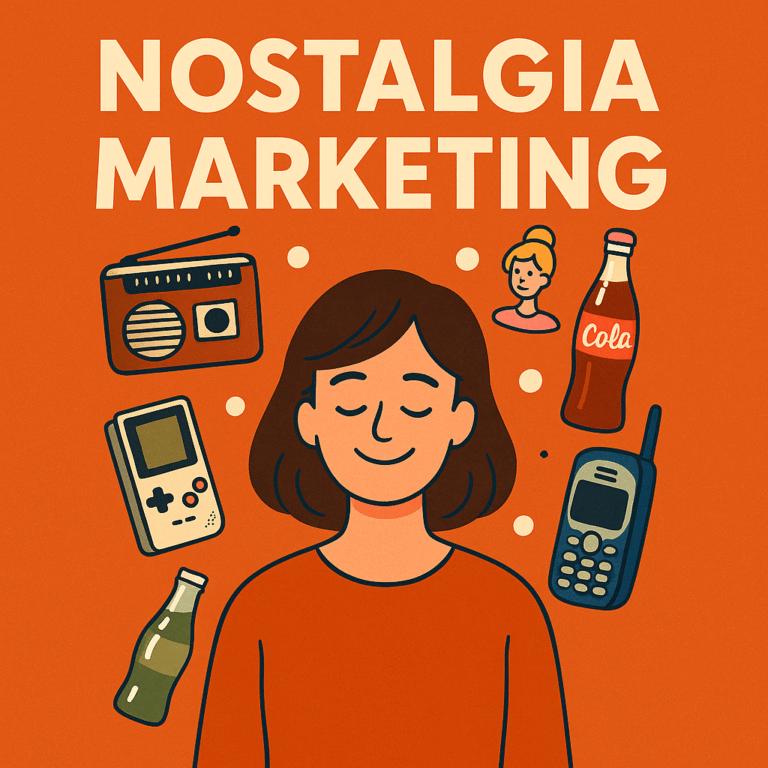Why are brands bringing back flip phones, retro logos, and 90s cartoons? It’s all part of nostalgia marketing, a clever strategy that taps into fond memories from the past to create emotional connections, increase engagement, and boost sales.
In this article, you’ll discover what nostalgia marketing is, why it resonates so well, and how brands, from Coca-Cola to Barbie, are using it to stay relevant and memorable in today’s rapidly changing marketplace.
Key Takeaway:
- Nostalgia marketing taps into positive memories and emotions, helping brands build trust, emotional connection, and long-term loyalty with consumers.
- The most effective nostalgia campaigns align retro elements with a brand’s core identity, referencing cultural touchstones that are genuinely meaningful to the target audience.
- Successful strategies include understanding your audience’s nostalgia timeline, blending old aesthetics with modern platforms, and grounding campaigns in authentic brand values.
- As digital culture evolves, the future of nostalgia marketing will be shaped by hyper-personalisation, rapid nostalgia cycles, and the fusion of past and present to create unique consumer experiences.
What Is Nostalgia Marketing?
Nostalgia marketing is all about linking a product, service, or brand with positive, familiar aspects of the past to create emotional connections. Brands often tap into this bittersweet emotion to build trust and boost perceived value.
From a psychological perspective, nostalgia helps reinforce our sense of identity, fosters a feeling of belonging, and offers comfort. In marketing, this translates into campaigns that make brands seem more human, trustworthy, and emotionally savvy.
Types of Nostalgia in Marketing
- Personal Nostalgia: Triggered by individual memories (e.g., childhood toys)
- Historical Nostalgia: Shared cultural moments (e.g., 80s fashion or 90s sitcoms)
- Imaginative Nostalgia: Fantasised pasts consumers never lived through
- Collective Nostalgia: Group identity, such as national or generational pride
Tailoring nostalgic content to these categories can significantly improve campaign resonance.
Why Nostalgia Marketing Works
Nostalgia marketing works because it taps into deep emotions and psychological triggers that influence how we make buying decisions. When we come across something from the past that feels familiar or comforting, it brings back positive memories and feelings, which then get linked to the brand. This emotional connection helps strengthen our sense of identity, fosters a feeling of connection, and ultimately encourages us to prefer and buy that product.
From a psychological perspective, nostalgia triggers three key mechanisms:
- Emotional Activation: Consumers re-experience positive memories, which enhances their emotional connection to the brand.
- Social Connectedness: Nostalgic content fosters a sense of belonging, reminding consumers of shared experiences with others.
- Self-Continuity: Nostalgia reinforces the sense of being the same person over time, providing stability and comfort in a rapidly changing world.
Research indicates that nostalgic consumers tend to spend more, engage more actively, and feel a stronger sense of loyalty. For example, a study published in Frontiers in Psychology suggests that nostalgia can lessen people’s hesitation to spend, particularly when the nostalgic feelings are connected to social bonds. This helps explain why nostalgia marketing often results in higher engagement and greater purchase intention.
Real-World Examples of Nostalgia Marketing
Nostalgia marketing comes into its own when brands tap into consumers’ memories, creating an emotional connection through brand history, identity, and the right timing. Here are five examples of brands that have used nostalgia marketing to resonate with modern audiences while staying true to their values and expectations.
1. Nintendo – “Two Brothers” Campaign
Nintendo’s “Two Brothers’ advert really hits home for millennial gamers who grew up in the 80s and 90s, battling it out on NES and SNES consoles with siblings. It tells a touching story of two brothers drifting apart over the years, only to reconnect thanks to the Nintendo Switch. The ad cleverly links memories of the past with modern tech, showing that Nintendo isn’t just about selling games; it’s about reconnecting people. By matching its emotional tone with its long-standing identity as a brand that encourages fun and togetherness, Nintendo reminds us it’s still relevant across all stages of life.
2. Barbie (Mattel) – 2023 Movie Launch
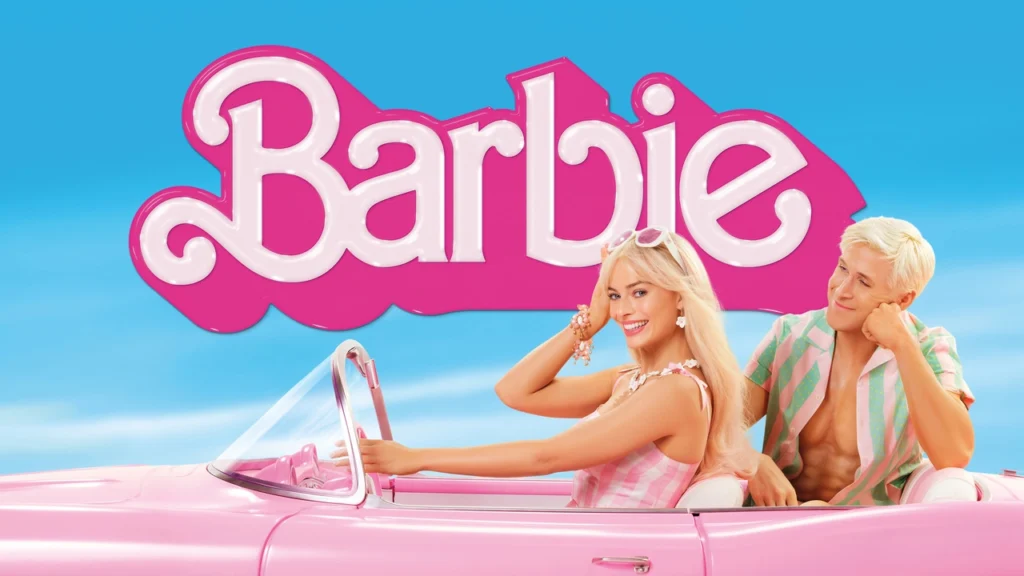
The 2023 Barbie film wasn’t just a movie; it was a clever rethink of the brand, blending nostalgia with fresh ideas. By weaving in beloved features like the Dreamhouse and fashion, alongside modern themes of empowerment and identity, Mattel managed to appeal to adults who grew up with Barbie, while also striking a chord with Gen Z. The approach worked because it paid homage to Barbie’s heritage while engaging with today’s cultural conversations, ultimately raking in over $1.4 billion at the global box office.
3. ColourPop x Twilight Collection
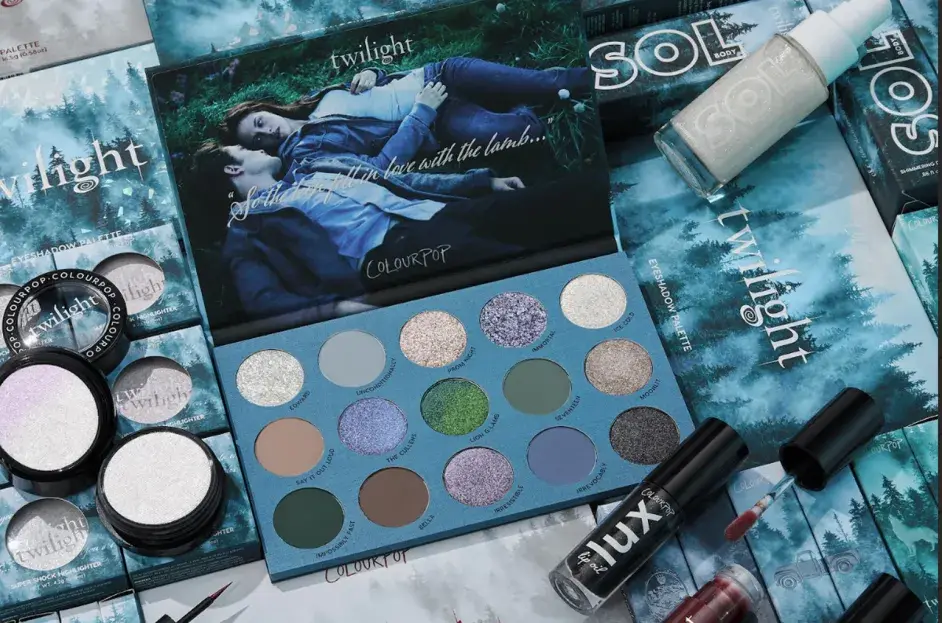
ColourPop’s collaboration with Twilight has sparked a wave of nostalgia for the early 2000s among millennials and Gen Z. The makeup collection taps into the vampire romance craze that was so big back then, and it’s been given a boost through TikTok and influencer marketing. The success wasn’t just down to the packaging; it’s about how fans weren’t just buying makeup, they were buying a part of their teenage years. That emotional connection created a real sense of urgency, leading to quick sell-outs.
4. Coca-Cola – Timeless Holiday Campaigns
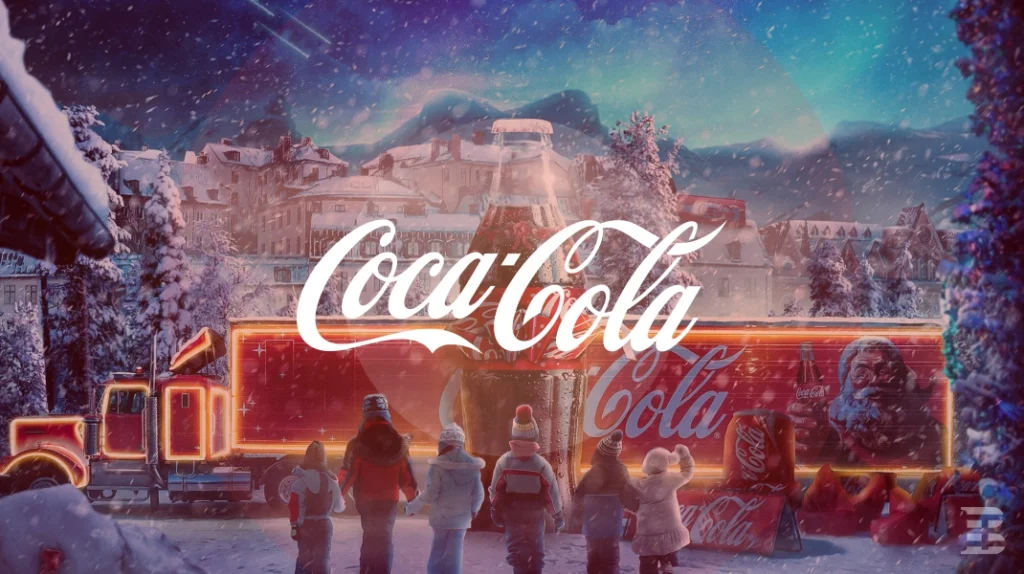
Coca-Cola has perfected the art of tapping into collective nostalgia, especially with its Christmas adverts featuring Santa, polar bears, and vintage-style bottles. These images often conjure feelings of warmth, tradition, and continuity. Instead of trying to reinvent the wheel, Coca-Cola maintains brand consistency by reminding people of shared holiday memories. It’s a smart strategy rooted in emotional connection and a sense of global cultural familiarity.
5. Furby (Hasbro) – 25th Anniversary Relaunch
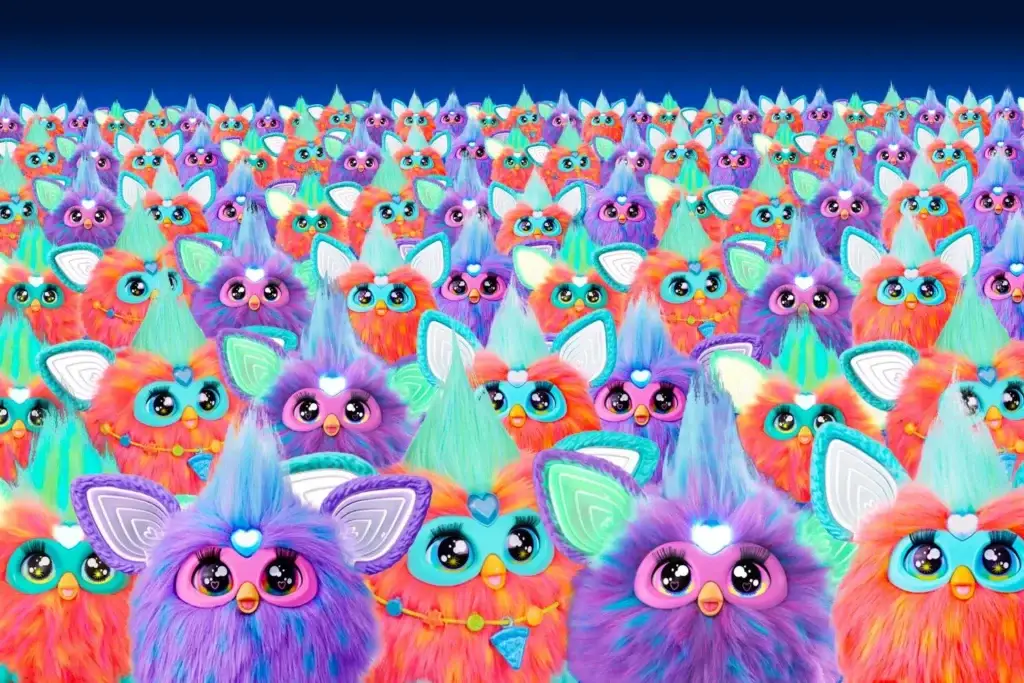
Hasbro has relaunched Furby, blending nostalgic retro design with modern features that appeal to both parents who remember it from their childhood and a new generation of kids. This clever move taps into the sentimental feelings of older audiences while keeping the toy fresh and relevant. It’s a smart strategy that encourages purchases across different generations, reinforcing Hasbro’s reputation as a brand that’s both timeless and adaptable. The campaign succeeded by linking emotional memories with a sense of novelty.
How to Use Nostalgia Marketing in Your Strategy
To successfully weave nostalgia into your marketing, it’s not just about using retro visuals or a familiar jingle. Brands need to approach nostalgia in a thoughtful and strategic way. Here are some key tactics, based on psychology and marketing research, that can help marketers connect with consumers on a more meaningful level.
Know Your Audience’s Nostalgia Timeline
Each generation has its own set of cultural milestones. Conducting audience research can help you understand what your target demographic grew up with, be it TV shows, video games, trends, or social events. For instance, Gen Z might feel nostalgic about the early 2000s, including tech like flip phones, while Millennials often connect more with 90s cartoons or 80s video games. A 2023 study found that nostalgia tends to be most effective when it’s rooted in the consumer’s formative years, generally between the ages of 6 and 18.
Reference Moments with Emotional Weight
Not every throwback hits the mark. Brands need to pinpoint symbols that genuinely evoke warm, positive feelings, like safety, belonging, or joy. Research from the University of Southampton suggests that nostalgia can enhance self-esteem and social bonds, which in turn positively influence how a brand is perceived. Focus on touchpoints that are not just familiar but genuinely meaningful on an emotional level.
Want to dive deeper into the emotional side of marketing? Check out our article on Mastering Emotional Marketing: How to Create Campaigns That Connect and Convert. Discover practical tips to spark emotional responses and make your brand unforgettable.
Blend Old Aesthetics with Modern Channels
Nostalgia doesn’t necessarily mean something is outdated. The most effective campaigns often draw on retro themes, but present them through modern platforms and formats. For example, ColourPop’s Twilight-inspired cosmetics launch was a hit because it combined references to the early 2000s with TikTok influencer campaigns. This strategy taps into shared memories while remaining relevant to how today’s audiences consume content.
Anchor Nostalgia in Shared Experiences
Campaigns that centre around universal life stages, like childhood, family traditions, or early friendships, tend to cross demographic boundaries. For example, Nintendo’s “Two Brothers” advert didn’t just aim at gamers; it told a heartfelt story about sibling connections and reunions. Academic research suggests that shared nostalgia can effectively foster social bonds and create stronger brand loyalty.
Stay Authentic to Your Brand Identity
Authenticity matters. When it comes to throwback campaigns, they should feel like a genuine part of your brand, not just a quirky gimmick. Take Coca-Cola, for example; it nails this perfectly because its nostalgic moments, like its festive commercials, align closely with its long-standing message of happiness and tradition. On the other hand, if nostalgia feels disconnected from what your brand genuinely stands for, it can come across as inauthentic or even opportunistic, which risks turning consumers off.
Future Trends in Nostalgia Marketing
As new generations grow up, nostalgia marketing is evolving. It’s no longer just about remembering the distant past; it now focuses on micro-eras, online cultures, and even those fleeting internet moments.
Moving forward, we can expect brands to:
- Leverage data to personalise nostalgia: With AI and machine learning, brands can now identify individual consumers’ nostalgic triggers based on age, location, and online behaviour. This paves the way for hyper-personalised nostalgia, where ads, playlists, or product recommendations evoke memories tailored to each user’s past.
- Incorporate ‘new nostalgia’ from digital-first experiences: Platforms like TikTok are reviving recent cultural touchpoints, like early meme culture, Vine references, or 2010s fashion, as new sources of nostalgia. These rapid nostalgia cycles create fresh opportunities for brands to stay relevant.
- Blend nostalgia with innovation: Successful brands will increasingly use nostalgia not as an anchor to the past but as a launchpad for innovation. This approach reassures consumers with what is known while exciting them with what is next.
- Focus on emotional resilience in a turbulent world: As geopolitical and economic uncertainties persist, consumers may increasingly seek comfort and coherence. Nostalgic messaging, when grounded in authenticity and warmth, can provide a sense of stability and shared identity, especially in fragmented digital environments.
Ultimately, the future of nostalgia marketing depends on how well it can adapt. Brands that see nostalgia not just as a fixed formula but as a flexible emotional connection, one that responds to cultural shifts and audience feelings, are the ones that will create a genuine and lasting impact in the years to come.
Looking to stay ahead of the curve in consumer psychology and strategic marketing? Don’t miss our in-depth article on 10 Essential Consumer Behaviour Trends Marketers Must Know in 2025. It’s packed with insights that complement nostalgia marketing and help future-proof your brand strategies.
Conclusion
Nostalgia marketing isn’t just a passing trend. It’s a genuinely powerful way to connect with consumers on an emotional level and foster long-term loyalty. By blending elements of the past with the present and staying true to your brand’s core identity, you can harness nostalgia to stand out, boost engagement, and create meaningful experiences for your audience.
FAQ
Nostalgia marketing is a strategy that taps into elements from the past, such as familiar images, music, or cultural references, to stir up sentimental feelings in consumers and deepen their connection with a brand.
Nostalgia tends to evoke warm feelings such as comfort, security, and a sense of belonging. These emotions can make consumers feel more emotionally connected, enhance trust in a brand, and encourage purchasing. Research from neuroscience and marketing indicates that nostalgic memories activate parts of the brain linked to rewards and social bonding, which helps explain why nostalgic adverts often prove so persuasive.
Begin by exploring your target audience’s childhood memories to discover relevant pop culture, trends, or shared experiences. Incorporate these references naturally into your campaigns, whether through product design, storytelling, or visuals, and share them through modern channels like social media, videos, or influencer collaborations.
The future of branding will likely see a rise in hyper-personalised nostalgia driven by AI, with references to recent digital moments like early TikTok or Vine. It’s about blending retro themes with modern innovations. As people look for comfort during uncertain times, nostalgic messaging will continue to be a strong emotional connection.

